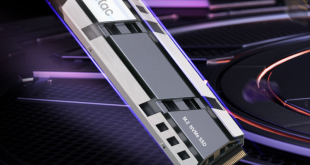Fitting in with the ‘Black Edition' scheme, Asus colours the typically-red ROG motherboard's packaging in a dark grey and black, to outline its particular status.
The front side outlines the bundled Assassin's Creed IV Black Flag game, while the rear side and inside flap outline some of the motherboard's key features.
A user guide, cable labels, the drivers disc, an ROG case sticker, a magnetic Republic of Gamers case badge, and the Assassin's Creed IV Black Flag game code form the supplied documentation.
The game code can be used to get a PC copy of Assassin's Creed Black Flag.
Typical accessories include ten SATA cables, the IO shield, Asus' Q-connectors, an ROG connect USB cable, and multi-GPU bridges. Asus supplies RIVBE buyers with a proper 4-way SLI bridge rather than rely on the less-flattering multi-ribbon approach that some other companies have used in the past.
Credit to Asus for including black multi-GPU bridges rather than the ugly brown variants.
A magnetic WiFi antenna connects to the motherboard's onboard card and provides users with dual-band, two-stream 802.11ac wireless connectivity capable of up to 867Mb/s on the 2.4GHz and 5GHz bands. Bluetooth 4.0 is also supported.
A feature that Asus is calling ‘X-Socket' allows the Rampage IV Black Edition's CPU socket to support both LGA 2011 (pre-fitted, by default) and LGA 1366 retention mechanisms. This could be a handy feature for overclockers using older LN2 pots or other cooling hardware.
The bundle consists of:
- 10x Latching SATA cables.
- 1x ROG connect USB cable.
- 2x Asus Q-connectors.
- 1x Rear IO shield.
- 1x 2-way CrossFire ribbon (long, flexible).
- 1x 2-way SLI bridge (long, flexible).
- 1x 3-way SLI bridge.
- 1x 4-way SLI bridge.
- 1x OC panel kit.
The OC Panel
First introduced with the Maximus VI Extreme Z87 motherboard, OC panel is new to Asus’ list of overclocking tools for 2013. Asus bundles the OC Panel with its top-of-the-line LGA 1150 motherboard, the Rampage IV Black Edition. The bundle consists of the OC Panel itself, a 5.25″ bay adapter, a connection cable, and mounting screws.
Situated above eight buttons is a 2.6″ LCD screen that is used to display information such as the base clock frequency, multiplier, fan speed, and CPU temperature. In the overclocking-geared mode, voltage readings can be displayed on the module’s screen, as well as temperatures reported by the Subzero Sense headers (located on the left-hand side, as shown in the above image).
A large arm opens out from the panel’s rear side, allowing it to stand on a desk or flat surface. The unit's awkward dimensions clearly impede its stability when balancing on the fold-out arm. Asus should design a better stabilising mechanism for future iterations of the OC Panel – it's not difficult to do so.
The ROG_EXT connection is found on the OC Panel’s bottom edge, alongside a SATA power connector. Power from the SATA port is only required when the fan headers are being used.
Removing the plastic cover reveals the OC Panel’s ‘work’ area. Found on the circuit board are two switches to change the POST activity, four 4-pin fan headers, VGA Hotwire connections, temperature sensors, boot LEDs, and additional electrical components.


Fitting the OC Panel into the 5.25″ bay adapter is as simple as sliding it into position before fastening it with two screws. The 2.6″ LCD screen and four surrounding buttons sit flush with the adapter’s front face.
Note: The above photos were taken from our review of the Maximus VI Extreme, hence the 39x ratio which relates to a 4770K CPU.
While it may prove difficult for hardcore gamers to find a worthwhile use for the OC Panel, it’s extreme overclockers who will truly benefit from its functionality.
Onboard overclocking and power buttons located adjacent to DIMM slots aren’t anywhere near as easy to use when they are frozen solid by LN2 or DICE pots. Instead, overclockers can connect the OC Panel, position it a few centimetres away from the board itself, and use it to control, adjust, and gather data from their system.
 KitGuru KitGuru.net – Tech News | Hardware News | Hardware Reviews | IOS | Mobile | Gaming | Graphics Cards
KitGuru KitGuru.net – Tech News | Hardware News | Hardware Reviews | IOS | Mobile | Gaming | Graphics Cards



















what an amazing board – very very expensive though!